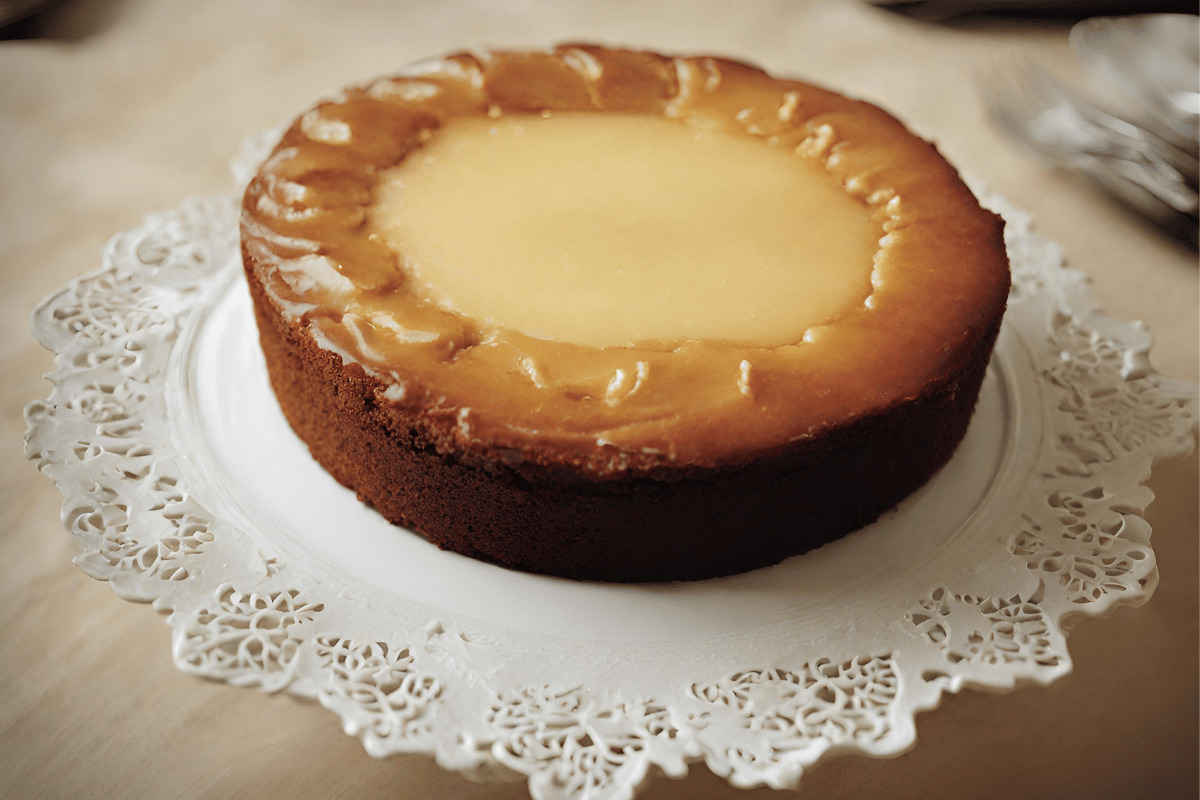Introduction to the Delights of Butter Cake
Butter cake, a cornerstone of homestyle baking, epitomizes the simple yet profound pleasure of a well-made dessert. Its golden crust and tender crumb offer a warm welcome to any table, evoking nostalgia and comfort with each bite. In this guide, we will walk through every step needed to create the perfect butter cake, from selecting the right ingredients to serving it at your next gathering. Along the way, we’ll explore various tweaks and tips to ensure your baking experience is as rewarding as the flavors you’ll create.
Introduction to Butter Cake
What Makes Butter Cake So Special?
Butter cake stands out in the world of desserts for its delightful simplicity and rich, comforting taste. Originating from traditional pound cakes, it has evolved into a versatile base for many creative variations. Its main appeal lies in the high butter content which gives the cake its luxurious flavor and moist texture.
A Brief History of Butter Cake
The origins of butter cake can be traced back to Europe, where bakers prized it for its rich flavor and simple ingredients. As baking techniques spread across continents, so did the popularity of this beloved dessert. Today, it remains a staple in celebratory feasts and cozy family dinners alike.
Why Everyone Loves a Slice of Butter Cake
The universal appeal of butter cake comes from its adaptability. Whether served plain with a dusting of powdered sugar or dressed up with fruit and cream, it never fails to impress. Its straightforward recipe also makes it a favorite among beginner bakers and seasoned pastry chefs.
This foundational knowledge of butter cake sets the stage for a deeper dive into the ingredients and methods that will ensure baking success. Stay tuned as we explore the essential components and step-by-step instructions to bring this classic cake to life in your kitchen.
Detailed Recipe and Variations
Ingredients and Equipment Needed for Butter Cake
To start your butter cake, you’ll need a few basic but important ingredients and some key pieces of kitchen equipment. Here’s what to gather:
Ingredients:
- Unsalted Butter: Essential for that rich, creamy texture.
- Granulated Sugar: Sweetens the cake and contributes to its golden top.
- Large Eggs: Bind the ingredients and give the cake structure.
- Vanilla Extract: Adds a classic, warm flavor.
- All-Purpose Flour: The backbone of the cake’s structure.
- Baking powder: An ingredient that aids in the cake’s rising.
- Salt: Just a pinch to balance the sweetness.
- Milk: Moistens the batter and lightens the texture. (For a dairy-free version, use soy or almond milk.)
Equipment:
- 9×5-inch Loaf Pan: Ideal for achieving the perfect shape.
- Electric Mixer: Ensures the butter and sugar are perfectly creamed.
- Mixing Bowls: For preparing the batter.
- Measuring Cups and Spoons: For precise ingredient measurements.
- Oven: Preheated to the correct temperature.
Step-by-Step Recipe Guide
Here’s how to put everything together to bake your butter cake:
- Preheat and Prep: Set your oven to 350°F (175°C). Grease your loaf pan or line it with parchment paper for easy removal.
- Cream the Butter and Sugar: In a large mixing bowl, use an electric mixer to cream the softened butter with the granulated sugar until light and fluffy.
- Add Eggs and Vanilla: Beat in the vanilla essence after adding each egg one at a time.
- Mix Dry Ingredients: Sift together the flour, baking powder, and salt in a separate bowl.
- Combine Wet and Dry Ingredients: Alternately add the dry ingredients and milk to the wet mixture, starting and ending with the dry ingredients. Mix until just combined.
- Bake the Cake: Pour the batter into the prepared pan and bake for 45-50 minutes, or until a toothpick inserted into the center comes out clean.
- Cool and Serve: Let the cake cool in the pan for about 10 minutes before transferring it to a wire rack to cool completely.
Variations of Butter Cake
- Lemon Butter Cake: Add lemon zest and a tablespoon of lemon juice to the batter for a citrusy twist.
- Chocolate Chip Butter Cake: Fold in a cup of chocolate chips before baking for a delightful chocolatey surprise.
- Spiced Butter Cake: Incorporate a teaspoon of cinnamon and a pinch of nutmeg for a warm, spiced flavor.
Each variation allows you to tailor the classic butter cake to suit any taste or occasion, making it even more versatile. For more baking techniques and to ensure your cake comes out perfectly every time, check out the detailed cake baking techniques provided by King Arthur Baking. This link offers a wealth of knowledge that can help both novice and experienced bakers.
With the basics and variations covered, we’ll next explore the best ways to serve and preserve your butter cake, ensuring every slice is as delightful as the last.

Serving and Preservation
How to Serve Butter Cake
Butter cake is delightful on its own, but there are numerous ways to elevate this simple dessert for any occasion:
- Classic Dusting: A light dusting of powdered sugar can add a subtle sweetness and an elegant touch.
- With Fresh Fruit: Serve slices topped with fresh berries or a dollop of whipped cream and sliced strawberries for a refreshing twist.
- Warm with Sauce: Drizzle warm caramel or chocolate sauce over the cake for a decadent treat.
These serving suggestions not only enhance the flavors but also add a visual appeal that makes the cake perfect for gatherings or a cozy family dessert.
Preservation Tips for Butter Cake
To enjoy your butter cake at its best, proper storage is key:
- Room Temperature Storage: Wrap the cooled cake in plastic wrap or store it in an airtight container. It will stay fresh for up to 3 days.
- Freezing for Longer Storage: Wrap the cake tightly in plastic wrap, then in foil. It can be frozen for up to 2 months. Thaw at room temperature before serving to restore its original texture and flavor.
These methods ensure that every slice of your butter cake remains moist and delicious, whether served immediately or saved for a later date.
Transitioning from serving to troubleshooting, our next section will cover common issues that might arise while baking and how to solve them, ensuring your baking success .


